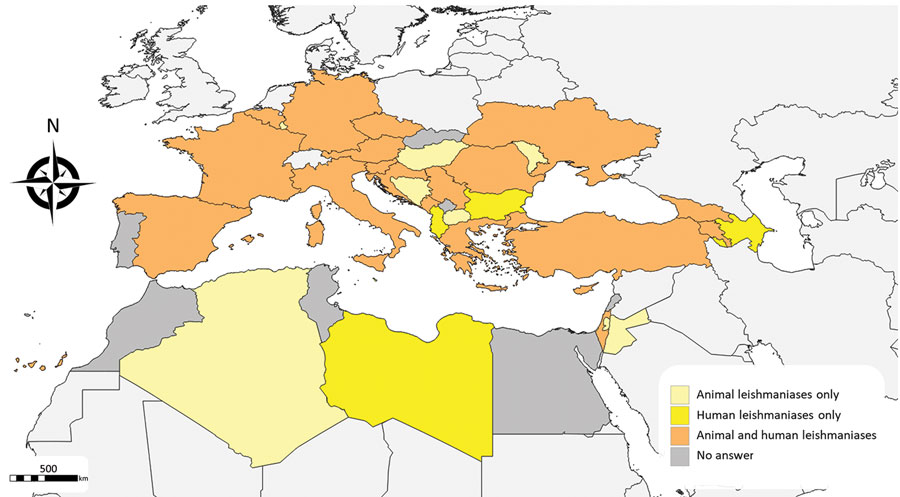Leishmaniases in the European Union and Neighboring Countries
Eduardo Berriatua, Carla Maia, Cláudia Conceição, Yusuf Özbel, Seray Töz, Gad Baneth, Pedro Pérez-Cutillas, Maria Ortuño, Clara Muñoz, Zarima Jumakanova, Andre Pereira, Rafael Rocha, Begoña Monge-Maillo, Elkhan Gasimov, Yves Van der Stede, Gregorio Torres, and Céline M. Gossner

Author affiliations: Universidad de Murcia, Murcia, Spain (E. Berriatua, P. Pérez-Cutillas, M. Ortuño, C. Muñoz, Z. Jumakanova); Universidade NOVA de Lisboa, Lisbon, Portugal (C. Maia, C. Conceição, A. Pereira, R. Rocha); Ege University, Izmir, Turkey (Y. Özbel, S. Töz); The Hebrew University of Jerusalem, Rehovot, Israel (G. Baneth); Instituto Ramón y Cajal de Investigación Sanitaria, Madrid, Spain (B. Monge-Maillo); World Health Organization Regional Office for Europe, Copenhagen, Denmark. (E. Gasimov); European Food Safety Authority, Parma, Italy (Y. Van der Stede); World Organisation for Animal Health, Paris, France (G. Torres); European Centre for Disease Prevention and Control, Stockholm, Sweden (C.M. Gossner)
Main Article
Figure 1

Figure 1. Geographic distribution of countries that responded to survey questionnaires about animal and human leishmaniases in Europe, 2020.
Main Article
Page created: April 21, 2021
Page updated: May 18, 2021
Page reviewed: May 18, 2021
The conclusions, findings, and opinions expressed by authors contributing to this journal do not necessarily reflect the official position of the U.S. Department of Health and Human Services, the Public Health Service, the Centers for Disease Control and Prevention, or the authors' affiliated institutions. Use of trade names is for identification only and does not imply endorsement by any of the groups named above.
